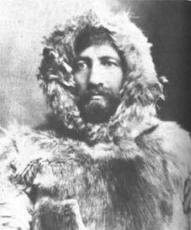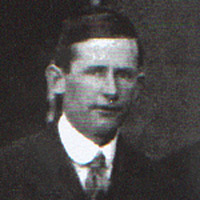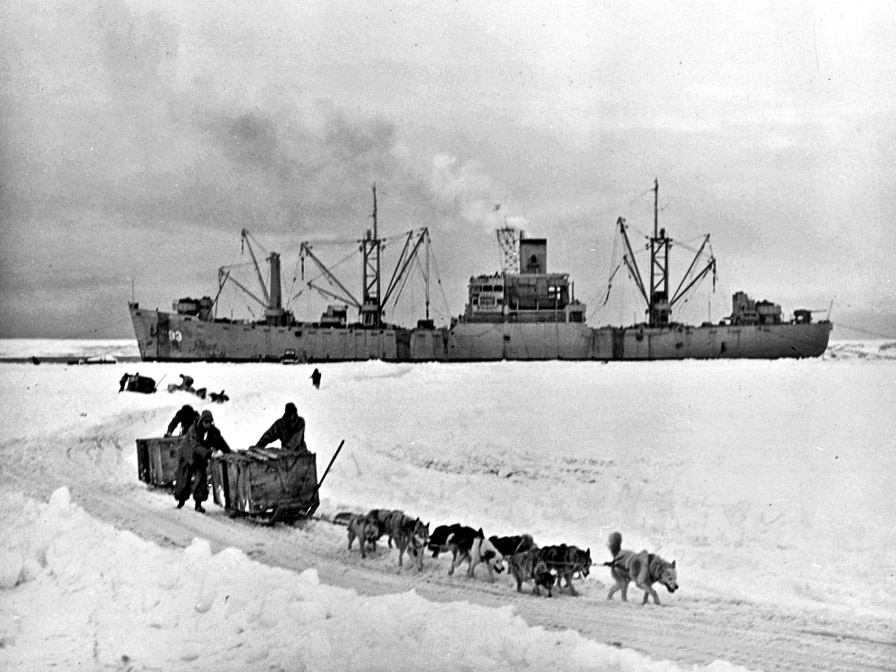 The
USA in Antarctica
The
USA in Antarctica
The History
and Activity of the Americans in the Antarctic
Americans have been involved in many early voyages. Sealer Nathaniel Palmer has a claim to be the first person to ever see the Antarctic continent in November 1820 (not an especially strong claim unfortunately). In 1840 the Wilkes Expedition was instrumental in establishing that Antarctica was indeed a continent. Official interest then waned for many years.
The 20th century inter-war period and the years following the second world war saw activity increase significantly with a number of well resourced private and national expeditions taking place. The US was a leading light in the International Geophysical Year (IGY) of 1957-58 which led to the Antarctic Treaty. The USA was one of the very first signatory nations of the Antarctic Treaty in 1960 and is a consultative party with voting rights able to make decisions about Antarctica.
Current activity
The USA is currently engaged in substantial scientific research activity in Antarctica.
|
Research Station and position |
Summer staff | Winter staff | Occupied | Use |
|
Amundsen-Scott South Pole Station,
South Pole 90° S, 0° E |
200 | 50 | 1956 - present | Year round |
|
McMurdo Station,
Ross Island, Ross Sea 77° 50''S 166° 40'E |
1258 max | 200 | 1955 - present | Year round |
|
Palmer Station,
Anvers Island, Antarctic Peninsula 64° 46'S 64°11'W |
46 max | 15-20 | 1965 - present | Year round |
United Sates Antarctic Program USAP - 1956 - present. USAP is managed and funded by the National Science Foundation (NSF) Division of Polar Programs in the Directorate for Geosciences. There are three year-round Antarctic research stations as detailed above. In addition, summer field camps are established to allow scientists to engage in research away from the established research stations in remote locations.
Air support for the bases is provided in the form of large ski-equipped LC-130 airplanes, operated by US Air National Guard crews, these fly from Christchurch, New Zealand to the Amundsen-Scott South Pole Station and McMurdo Station. U.S. Air Force wheeled C-17's are also used to fly personnel and supplies to Antarctica. Helicopters, Twin Otter airplanes, and Basler (DC-10) airplanes, flown by contractors support research teams at sites away from the main bases. A variety of vehicles, tracked and wheeled vehicles are used for transport over ice and ice-free land areas.
Shipping support is provided by two ice-strengthened research vessels, Laurence M. Gould and Nathaniel B. Palmer, these resupply Palmer Station and carry out oceanographic research voyages. An ice-strengthened cargo ship and tanker bring cargo, supplies, and fuel to McMurdo Station for both McMurdo and the South Pole stations once a year at the beginning of the Antarctic summer season. South Pole cargo are then flown on from McMurdo. Currently USAP contracts out much of the operational and logistic support to the civilian contractor Lockheed Martin Corporation.
Website: http://www.usap.gov/
Early explorations and sightings, pre 1898
1820 - Nathaniel Palmer - Hero
Nathaniel Palmer on the ship Hero has a claim on being the first person to see the continent of Antarctica when he sighted land south of Deception Island on the 16th of November 1820. While the rest of the sealing fleet of which he was part hunted around the South Shetland Islands that had only been discovered the previous year, the Hero explored further. The ship sailed to the west and south but found no further seals and so returned north again. The area was later named the Palmer Archipelago. The next year Palmer proceeded eastwards with a British sealer where he was part of the discovery of the South Orkney Islands in December 1821.
1821 - Captain John Davis - Cecilia
A sealing ships' captain is (possibly) the first person to set foot on Antarctica on the 7th of Feb 1821. A party of men from the sealing ship Cecilia set ashore and spent less than an hour looking (unsuccessfully) for seals. This may have been the very first landing on the Antarctic continent though is not accepted by all historians.

1838 - 1842 - United States Exploring Expedition - Charles Wilkes - Vincennes
The expedition reported the discovery "of an Antarctic continent west of the Balleny Islands" in Eastern Antarctica, this part of Antarctica was later named Wilkes Land after Charles Wilkes the leader of the expedition at that point (he wasn't the original leader). The intention was to have ventured into the Weddell Sea on the Western side of the continent though this was prevented by the lack of suitable equipment and clothing. The expedition was the first to sail along a substantial length of coast in Eastern Antarctica so proving that there was a continental sized landmass.
Heroic Age Expeditions 1898-1922
There were no American led or organised expeditions during the Heroic Age of Antarctic exploration, though Americans took part in expeditions organized by other nations during this era.

![]() Belgica 1897-99 -
Belgian Antarctic
Expedition.
Belgica 1897-99 -
Belgian Antarctic
Expedition.
Frederick Albert Cook - Surgeon, anthropologist and photographer. The first expedition to overwinter in Antarctica on board the ship frozen into the sea-ice off the Antarctica Peninsula. The crew were not prepared for the over-wintering and they suffered from a lack of food, clothing and supplies while some developed psychological problems. Frederick Cook and Roald Amundsen are both credited with helping the crew to survive the winter, not least by hunting for fresh meat to help protect them from the effects of scurvy. In 1908 Cook would make a claim to be the first person to reach the North Pole, a claim that is considered to be fraudulent or at best mistaken.

 Endurance 1914-17 -
British Trans-Antarctica
Expedition
Endurance 1914-17 -
British Trans-Antarctica
Expedition
William Lincoln Bakewell - Able Seaman.
Shackleton's Endurance expedition is one of the most famous
of all adventure tales not only from the Antarctic, even though
the expedition came no-where near achieving its aims (the
Endurance being sunk before even reaching its first
landfall at the edge of the Weddell Sea). The story remains
one of the most incredible adventures of all time with all members
of the ships crew brought safely home against a range of unfavourable
odds. Every member of the crew played a role in the adventure.
William Bakewell joined the Endurance at Buenos Aires. He
was the only American aboard ship, though he posed as a Canadian
thinking that the British ship would be more inclined to take
on a subject of the British Empire. The Endurance had become
three crew members short and Bakewell was taken on for this
reason. Unknown to Shackleton at the time, Bakewell helped his
friend Perce Blackborow to also join the ship unofficially as
a stowaway. Bakewell was well liked and Shackleton regarded
him to be: "... a cut above the rest
of the seamen".
bio
Exploration Scientific Bases and Research after 1922
![]() 1928-30 -
Richard Byrd's First Expedition - City
of New York and Eleanor
Bolling
1928-30 -
Richard Byrd's First Expedition - City
of New York and Eleanor
Bolling
The two ships deposited Byrd and his team on the Ross Sea side of Antarctica for a two year privately funded expedition. The most highly publicized event was the very first flight over the South Pole in a Ford Trimotor airplane named the "Floyd Bennett" on the 28th of November 1929 by Byrd and three others following the route taken by Amundsen. The flight took 16 hours in total at a time when long flights of any kind were unusual and not lightly undertaken. The expedition established an overwintering station named "Little America" 7 miles inland from the ice edge at the Bay of Whales.
Byrd's First Antarctic Expedition 1928, video, 1 hr 3 mins

![]() 1933-35 -
Richard Byrd's Second Expedition -
Bear of Oakland
and Jacob Ruppert
1933-35 -
Richard Byrd's Second Expedition -
Bear of Oakland
and Jacob Ruppert
Following the success of the first expedition, Richard Byrd immediately began planning a second expedition. The ships sailed from the USA in late 1933 arriving at Little America Base in January 1934 where supplies were dropped including 150 sled dogs and 4 aircraft. Byrd himself decided to overwinter alone on a small separate weather station, while the first several weeks passed uneventfully enough, he was eventually rescued by his fellow winterers from the main base who had become concerned. They found him disheveled and with suspected carbon monoxide poisoning from a solid fuel stove. Later much valuable pioneering exploration work was carried out by aircraft, tractors and dog teams. Byrd's detailed planning had described some previously huge gaps in the map of Antarctica and had trained a generation of men in working and researching in Antarctica. The USA was established as a leading nation in the exploration of Antarctica.
![]() 1933-34, 1934-1935,
1935-1936 and 1938-1939 - Lincoln Ellsworth - Wyatt Earp
1933-34, 1934-1935,
1935-1936 and 1938-1939 - Lincoln Ellsworth - Wyatt Earp
1 - An intended flight from near Little America and the Bay of Whales across Antarctica in January 1934 had to be abandoned when the aircraft, the Pole Star, though a mile from the ice edge suffered damage when a heavy ocean swell split the ice she was on causing damage to the skis and one wing. The aircraft was shipped back to the USA to be repaired for the following summer season.
2 - For the 1934-35 season a different approach was tried from Deception Island on the other side of Antarctica. The first attempt to start the engine snapped a connecting rod and by the time repairs had been made, weather conditions meant flying had to be abandoned that season.
3 - Lincoln Ellsworth became the first to successfully fly across the continent in December 1935 after an epic journey where he and Canadian pilot Herbert Hollick-Kenyon first landed 650 miles short of the destination at Byrd's Little America station. Upon resuming their flight, and after forced landings due to bad weather leading to delays of 3 days and then 7 days they finally ran out of fuel with 15 miles to go. 6 days later they found the base buried under the snow but well provisioned with food and fuel. A month later they were found by a party of men from the ship Discovery II while their own ship, the Wyatt Earp arrived four days later. Ellsworth's expeditions from 1933-39 explored large areas of Antarctica either little or not at all visited previously.
![]() 1939 - 41
United States Antarctic Service Expedition - USNS
North Star and USS Bear
1939 - 41
United States Antarctic Service Expedition - USNS
North Star and USS Bear
Richard Byrd, now a Rear Admiral was tasked with commanding an expedition to set up two long term manned stations in Antarctica. This was a government sponsored response to territorial claims being made by other nations at the time. The ships set up a West Base on the Ross Ice Shelf in January 1940 followed by East Base on Stonington Island on the other side of the continent off the Antarctic Peninsula in March 1940. Each base had aircraft and dog teams for exploring and mapping purposes. The progress of WW2 led to a removal of funding and the expedition was cancelled in 1941 with the Antarctic Service being disbanded.
![]() 1946-47 -
Operation Highjump - United States Navy Antarctic Development
Project
1946-47 -
Operation Highjump - United States Navy Antarctic Development
Project
The largest of all Antarctic Expeditions by any country involving 13 ships and around 4,000 personnel. The aim was to explore and photograph Antarctica by sea and air and to provide cold weather operational experience. Six Douglas R4Ds were involved flying in to a prepared temporary airstrip from an aircraft carrier, there were also three flying boats and a submarine. There were three distinct task forces, the central one operated near to Byrd's old base and established a new base "Little America IV". The eastern and western task forces operated either side of this in an attempt to reach almost all the way around the Antarctic continent by ship-based and land surveying and aerial photography. The objective of conducting naval operations in a polar environment was fully met with the secondary objective of obtaining good aerial photographic coverage mainly met though with some issues due to weather meaning not all areas were addressed as fully as was planned.


![]() 1947-1948
- Ronne Antarctic Research Expedition -
Port of Beaumont
1947-1948
- Ronne Antarctic Research Expedition -
Port of Beaumont
Finn Ronne led a private American Expedition based on Stonington Island on the Antarctic Peninsula to survey both sides of the peninsula from the air and ground. The expedition used the old Stonington Island hut from the 1939-41 United States Antarctic Service Expedition. Ronne's wife Edith and Jennie Darlington, wife of Harry Darlington the chief pilot, became the first two women to winter in Antarctica. There was co-operation with a British wintering party on the same island to make surveying trips. The iced-in ship was freed by visiting ice-breakers from Operation Windmill.
![]() 1947-48 -
Operation Windmill - United States Navy Second Antarctic Developments
Project - USS Edisto and USS Burton Island
1947-48 -
Operation Windmill - United States Navy Second Antarctic Developments
Project - USS Edisto and USS Burton Island
A much smaller expedition of two icebreaking ships whose job was to place small onshore parties to take measurements to assist the placing of the 70,000 aerial photographs taken during Operation Highjump. The name "windmill" came from the use of three helicopters in deploying shore parties. There were also exploration and training exercises as part of the operation which was accompanied by ten civilian observers and scientists.

![]() 1955-58 -
Operation Deep-Freeze - United States Navy Antarctic Expeditions
1955-58 -
Operation Deep-Freeze - United States Navy Antarctic Expeditions
In 1955-56, the US Navy in conjunction with scientific teams from the National Science Foundation (NSF) established bases in Antarctica in preparation for the International Geophysical Year (IGY) 1957-58. There were 3 icebreakers, 3 freighters and a gasoline tanker involved in the first expedition. "Operation Deep-Freeze I" was followed by "Operation Deep-Freeze II" in 1956-57 and became the name given to all subsequent annual expeditions until 1998 when the Naval Antarctic Support Unit was disbanded.

![]() 1957 - 1958
- International Geophysical Year (IGY)
1957 - 1958
- International Geophysical Year (IGY)
The USA was one of the leading nations in this international event that was pivotal in establishing Antarctica as a continent for peace and science leading to the signing of the Antarctic Treaty in 1961.
Territorial Claims
The USA has not previously claimed any part of Antarctica and does not do so at the present. However, the right is asserted to make such a claim in the future should this course of action be chosen.
The Antarctic Treaty, Article IV § 2 states: "No acts or activities taking place while the present Treaty is in force shall constitute a basis for asserting, supporting or denying a claim to territorial sovereignty in Antarctica. No new claim, or enlargement of an existing claim, to territorial sovereignty shall be asserted while the present Treaty is in force".
So the Antarctic Treaty does not suspend or defer existing claims, though it does state that:
- No activities occurring after 1961 can be the basis of a territorial claim.
- No new claim can be made.
- No claim can be enlarged.
Practically territorial claims have been effectively suspended since 1961.
Image credits: Operation Windmill picture - Smithsonian Institution



